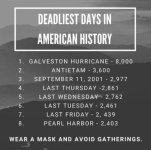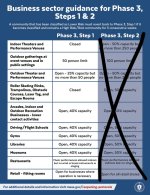A new survey examining the public’s sentiment toward restrictions aimed at slowing the spread of COVID-19 suggests that a majority of Massachusetts residents favor such measures, even if it means being stuck at home.
The results suggest that there is not only political support for more restrictions to be implemented but also a public desire for more to be done, one of the researchers wrote in an e-mail.
“The biggest single conclusion is that there is a lot of public support for the governor to be more aggressive in his response to COVID-19,” said David Lazer, a Northeastern University professor and researcher with the COVID-19 Consortium for Understanding the Public’s Policy Preferences Across States, which sponsored the survey. The effort also included researchers from Harvard, Northwestern University, and Rutgers University.
The study, released Tuesday morning, found that 88 percent of 919 respondents surveyed as part of an online panel between Oct. 1 and Nov. 28 support restrictions to keep people at home and avoid gatherings, and 89 percent support restricting international travel to the US.
Respondents were less supportive of closing businesses, yet still more than half — about 63 percent — said they would support shutting businesses down to help curb the virus’s spread.
The study found that 82 percent of respondents support canceling major sports and entertainment events; 76 percent support restricting travel within the U.S.; 79 percent support limiting restaurants to carry-out only; and 71 percent support prohibiting in-person learning in K-12 schools.
The data is further broken down by political party affiliation, race, age, parental status, and wealth. The study found that non-white Massachusetts residents are more supportive than white residents in all six restrictions. It also concluded that women are more supportive of the measures than men.
Parents of school-age children were more supportive of most restrictions than people without school-aged kids, the study found. The biggest difference was over the closing of businesses, which garnered support from 81 percent of respondents who were parents of school-aged kids, compared to 62 percent support from their counterparts without school-age children. Parents looked slightly less favorably upon restricting international travel.
The study also found, to little surprise, that opinion on restrictions differs greatly depending on political party affiliation: While 81 percent of Democrats surveyed said they support closing most businesses, only 47 percent of Republicans agreed.
The closest they come to agreeing was on international travel restrictions, which were supported by 87 percent of Republicans who participated and 92 percent of Democrats.
“Very nearly a majority of Republicans in Massachusetts support the least popular of the measures we surveyed: closing most businesses,” he wrote in an e-mail. “And considering that Independents form an important part of Governor Baker’s support coalition, it’s worth noting that almost 60 percent of those voters support closing most businesses, while higher percentages support all of the other measures.”
He added, ”The implication is, again, that if our leaders are willing to take bolder actions to contain the spread of the virus, the citizens of Massachusetts appear to be ready to support them in doing so.”


